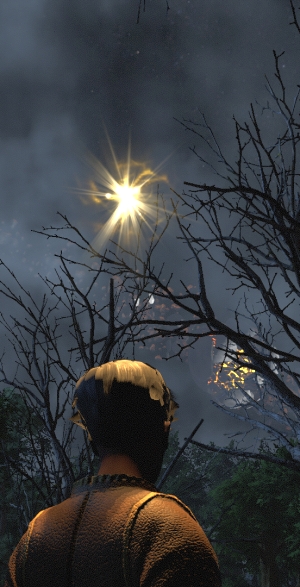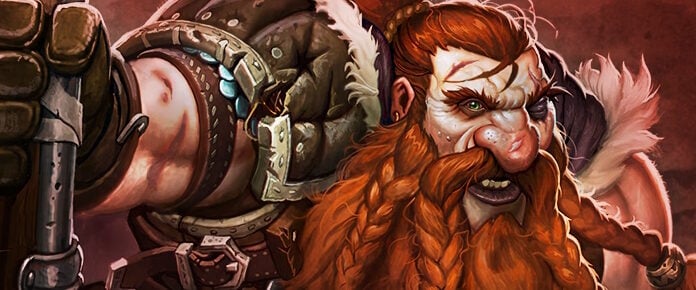
One of the first things I did in Shroud of the Avatar was get kind of lost. The last week’s activities were largely similar. Only now, it was a different kind of lost.
It wasn’t just that I didn’t have much of anywhere to go; that was how the vote went, after all, and while it might not have been my first choice that’s kind of the purpose behind voting instead of just letting me decide everything. It wasn’t just that the areas afforded me little to no guidance about points of interest. It was that I kept asking myself “why?” as I worked, fought things, explored, and so forth.
No answers were forthcoming. And perhaps that’s missing the point, but it also struck me that this is part of the reason why a guild may have made a major difference here. Albeit not necessarily for the best, but let me get into that as I go.
 One of the things I keep jutting up against is a lack of direction in the game, and as someone who usually has pretty elaborate plans from a fairly early level this might seem odd. “You provide your own guidance in the game!” goes the rallying cry. And while that’s great advice generally, here it seems to run into trouble for a couple of reasons.
One of the things I keep jutting up against is a lack of direction in the game, and as someone who usually has pretty elaborate plans from a fairly early level this might seem odd. “You provide your own guidance in the game!” goes the rallying cry. And while that’s great advice generally, here it seems to run into trouble for a couple of reasons.
The first problem is that providing your own guidance requires the game’s design to point you in a direction first. You can’t head somewhere without knowing that there’s actually a destination you can work toward, after all. The second problem (and the one I want to focus on this week) is that even having been pointed in that direction, there’s a problem if you don’t feel there’s much waiting down that route.
Some incredulity was expressed when I found combat to be a fun side of the game, since that’s a part of the game that frequently gets critiqued. And those critiques are definitely fair, and I could definitely see it was I suffered through some jankiness with animations and balance. But combat was, at the very least, engaging and comprehensible. I could go in and have a reasonable idea of what I was doing.
More to the point, I could see where this could be really fun. It just required a lot of grinding to get there, and lo and behold, that was indeed what I did. Except – and this struck me for the past couple of sessions – it was an open question of what I was grinding for.
A bunch of the stuff I encountered while slicing my way through the countryside seemed like quest items, which looked familiar to me as someone who spent years with another game that didn’t require you being on a quest in order to get the quest item. That’s a cool thing and I like it. What I liked less was that I never felt as if I had a reasonable chance of finding the person who was connected to this quest; it was just empty, a connection I picked up somewhere in the middle without any links.
No, I’m not saying that I’d prefer a World of Warcraft-style quest popping up immediately telling me to go bring this back to my good friend Duckwhistle McFart whom I never met before picking up this quest. But there has to be a midpoint between that and just suddenly getting an item from the middle without any guidance about what might be going on.
For the record, as a few people have asked me why I’m not using the built-in mod meant to connect with SotaMap, the answer is… I am. Or I’m trying, at least. The problem isn’t that I’m unaware it’s there, the problem is that all but twice, I’ve gotten an error message. It’s possible that there’s more to be done there, definitely, but the game doesn’t even mention “hey, this game has no in-game map, but we have something modded in to connect with a fan-run server.”
I mean, sure, there are problems with that, too, because if you know there’s enough of an issue with your game to make having a map something that is solved by fans you may want to actually have a map, but at least that would indicate that designers see an issue there. Here, nothing.
Also in the interests of fairness, I’d like to point out that the in-game maps which actually dropped for me over the course of gameplay (which were chiefly useless because of where they mapped) were nice to look at at least. The lack of any sort of tracking of player location was a bit of an issue, but the game could certainly have sold its maps on the idea of having no player or hotspot tracking. It’d still be a problem, but it’d seem more like a difference of preference than just… not realizing what the lack does to a game.
![]()
But this week, I was lost. I had no real momentum to try and sort all of this out. And here is where yes, a guild would have indeed helped. Not because it would have involved free stuff (which is a distinct possibility), but because guilds here can easily replace designer momentum with social momentum.
Sure, you might not have much pushing you forward in the game. But hey, Kyle and Sandra need some help decorating their house, and Sam needs more leather, and there’s a really cool spot you can probably reach that’s great for grinding, Olivia and I will show you where it is. Suddenly you have a reason to move forward, because it’s not just “what am I doing,” it’s “what are all of us doing.” It’s the sort of thing that can drive a lot of investment over time.
Heck, it’s part of what keeps me in several of my favorite games; I sent a message to one of my better friends in my main game just a couple days ago talking about how she’s helped keep me motivated. A guild would absolutely help do that.
Except, and this is something I didn’t mention prior to the polls for risk of skewing the results… a guild will do that in any game. Having a guild to push you forward isn’t a way to show that a given game is well-designed, it’s a sign that friends are important in this social game you’re playing. And frankly, that statement alone seems so obvious as to almost form a tautology. Turns out a social game is significantly enriched with social connections, who knew?
For that matter, this makes player-run towns a bit of genius on the part of Portalarium, because almost any design would keep people engaged if they see it as part of the requirement to keep their player-run town ticking over nicely. The game stops being about Avatars and the shrouds thereof and is instead a game about running your town. I appreciate that immensely and think it’s very cool, but at the same time I see it as not really being about the game itself at that point.
So that may have helped me feel less lost. But I don’t think it ultimately would have resulted in a fairer picture.
At this point, though, it’s time to cap out my experience, so feel free to leave your opinions and insights down in the comments or mail them along to eliot@massivelyop.com. Next week, I’ll have my concluding thoughts on the game as a whole as well as chatter about our next destination, so don’t touch that dial if you use some kind of dial-based system to navigate the internet. I probably made that dial joke before.















